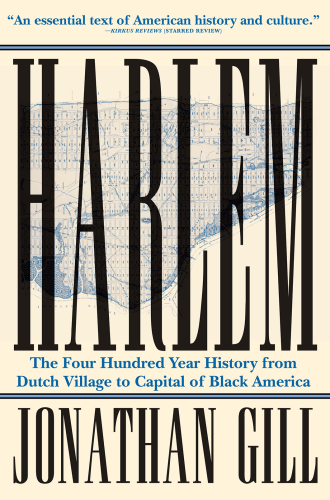
Harlem
The Four Hundred Year History from Dutch Village to Capital of Black America
کتاب های مرتبط
- اطلاعات
- نقد و بررسی
- دیدگاه کاربران
نقد و بررسی

November 1, 2010
Historian Gill documents Harlem's transformation from the early days of Dutch settlements and farms to its apogee as the site of one of the 20th century's most influential musical and literary flowerings in a dense, deftly told history. The author takes us from colonial Harlem, so strategically important in the American Revolution, to the 20th-century crucible of African-American arts and intellectual development, a place so vaunted that "Negroes wanted to go to Harlem the way the dead wanted to go to heaven." He invokes a veritable who's who of the black arts and intelligentsia who either called the neighborhood home or launched their careers in its embrace. Gill's analysis of Harlem's decline in the 1970s and the concomitant unemployment and crime is thorough, although his account of the Black Panthers and his analysis of the era's various "disturbances"—particularly a 1967 riot following a fatal episode of police brutality—wants a more nuanced interpretation. From the 1994 economic revitalization to the specter of gentrification, Gill makes a persuasive case that "change is Harlem's defining characteristic," and readers of this vibrant history will appreciate every step of its singular evolution.

Starred review from October 15, 2010
Holland Times arts critic Gill (American History and Literature/Manhattan School of Music) charts the astonishing transformations, upheavals, revolutions and continual renaissances that have affected the uptown terrain and population for hundreds of years.
In 1609, Henry Hudson glimpsed the Manhattan shoreline and exchanged fire with the local Indians, thus commencing the cultural clashes that continue in the present. The author traces the story of the area from its geological history to the current times of Al Sharpton (who fares poorly here). In the early chapters, Gill summarizes the stories of the Algonquin people and the original Dutch settlers, who laid out their New Haarlem in the mid 17th century. Then the British decided they owned the island, took over and fecklessly renamed New Haarlem "Lancaster," a name that didn't last long. The author follows the colonial history, the significance of the region in the American Revolution (Washington won a key victory at Harlem Heights) and the transformations wrought by the New York and Harlem Railroad and commerce (and greed). As Gill notes, Harlem was for many decades a center of recreation for downtowners, featuring plentiful forests and beautiful geological formations. Soon, it was human entertainment—music, drama, dancing, art and the allures of alcohol and assorted illicit behaviors—that became the principal attraction. Mansions rose, and the wealthy partied hard. Then Harlem began to attract a wide assortment of minorities—Latinos, African-Americans, Jews from Eastern Europe, Italians. By the early 19th century, more and more blacks were calling Harlem home, and as the economy cracked, racial fireworks commenced, raged throughout the Civil War and far beyond. As Gill writes, however, the area has long been home to an amazing assortment of talented individuals—politicians (Marcus Garvey), athletes (Lew Alcindor), writers (Langston Hughes), musicians and performers (Paul Robeson), intellectuals (W.E.B. Du Bois) criminals (Casper Holstein).
Comprehensive and compassionate—an essential text of American history and culture.
(COPYRIGHT (2010) KIRKUS REVIEWS/NIELSEN BUSINESS MEDIA, INC. ALL RIGHTS RESERVED.)

November 1, 2010
The iconic neighborhood is sometimes called "the capital of Black America," but Gill takes readers back to the area's earliest peoples and on through Dutch, British, and American domination.
Copyright 2010 Library Journal, LLC Used with permission.

Starred review from February 1, 2011
How did Harlem evolve from a Dutch colonial outpost to the most storied of African American neighborhoods? History and literature scholar Gill offers an exquisitely detailed account of the 400-year history of Harlem. Gill tracks Henry Hudsons accidental encounter with the island of Manahatta as he searched for China, the struggle between the Dutch and the British to claim the area, the Revolutionary War, and the later establishment of wealthy estates. He chronicles the waves of immigrants in the nineteenth century, who added to the pulse and texture of the developing urban culture. In the twentieth century, as African Americans migrated from the South and the West Indies, they began to dominate the culture, and the Harlem Renaissance put its indelible stamp on the neighborhood. Gill details major figures from George Washington and Alexander Hamilton to Langston Hughes, Marcus Garvey, and Malcolm X as well as the vibrancy of music, art, literature, religion, politics, and urban sensibility that has come to signify Harlem. Richly researched, the book details the particular blend of street-corner preaching and political proselytizing as well as the drive of black commerce and civil rights that also have come to signify African American Harlem. A vibrant, well-paced, engaging history of an iconic neighborhood.(Reprinted with permission of Booklist, copyright 2011, American Library Association.)

























دیدگاه کاربران